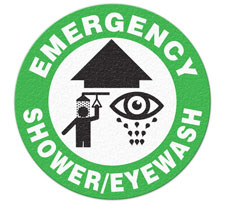| The Home page of ILPI's Safety Data Sheet (SDS) Resource, the leader in SDS information since 1995! | |
| The history and philosophy behind this resource. | |
| A curated collection of books and reference materials concerning Safety Data Sheets and closely related topics. | |
| Paste your plain text SDS into the SDS-Demystifier, and it will be converted into a hypertext-enriched document with links to detailed explanations of each key term. | |
| An extensive list of frequently asked questions about Safety Data Sheets including regulations, content, compliance, and more. | |
| A humorous take on Safety Data Sheet jargon. Fill in the blanks on our entry form to generate a personalized Unsafety Data Sheet to share with your coworkers. | |
| Since 1995, we've maintained this massive curated list of the best places to find Safety Data Sheets on the Internet. | |
| Way more than a glossary, this hypertext-enhanced resource covers hundreds of SDS-related terms and expert knowledge. Each entry includes both the SDS relevance and links to additional authoritative resources. | |
| Archived results of Safety Data Sheet related polls taken by some of our millions of site visitors | |
| You are here! The OSHA regulations behind SDS regulations, including the inspection guidelines and over 400 official interpretations letters under the Hazard Communication Standard | |
| Commercial suppliers of SDS authoring and management software as well as cloud compliance services. | |
| Commercial companies that will create SDS's for your specific needs as well as SDS translation companies. |

Safety signs, banners, and scoreboards? Get yours at Safety Emporium!
| Title: 11/10/1992 - Employee "Right to Know" chemical labeling. | |
| Record Type: Interpretation | Standard Number: 1910.1200 |
November 10, 1992
The Honorable Thomas J. Bliley, Jr.
U.S. House of Representatives
Washington, D.C. 20515
Dear Congressman Bliley:
This is in response to your letter of September 2, on behalf of your constituent Mr. N. Lee Brown, concerning the Occupational Safety and Health Administration's (OSHA) Hazard Communication Standard (HCS), 29 CFR 1910.1200. Mr. Brown pointed out what seemed to be discrepancies in describing the hazards of the chemical acetaldehyde.

Keep informed about workplace hazards with proper labeling techniques and safety posters available from Safety Emporium.
The Hazard Communication Standard requires chemical manufacturers or importers to consider a chemical carcinogenic if the International Agency for Research on Cancer (IARC), National Toxicology Program (NTP) or OSHA designates the chemical as a carcinogen or potential carcinogen (please see 29 CFR 1910.1200(d)(4)). If the chemical is a carcinogen and in concentrations of 0.1% or more the health hazard must be explained in the material safety data sheet (MSDS). We see no conflicting information, since the document which Mr. Brown enclosed stated that both NTP and IARC classify acetaldehyde as a carcinogen.
Mr. Brown also noted that the Food and Drug Administration (FDA) recognizes acetaldehyde as safe "for use as a flavoring," and that this conflicting information makes a judgment call difficult. When there is conflicting information that would affect employee safety and health, employers should take the more conservative approach to ensure that the work place is hazard free. In this case, however, OSHA gives solid guidance in its Hazard Communication Standard on which chemicals to label carcinogenic. FDA classification is not required by the HCS; however, if Mr. Brown is interested in the FDA's studies we suggest that he contact the FDA to request their studies on the health effects of acetaldehyde as a flavoring and preservative in consumer products.
We hope this information is helpful. If you have any further questions please feel free to contact us at (202) 219-8036.
Sincerely,
Roger A. Clark,
Director
Directorate of Compliance Programs
September 2, 1992
Secretary Lynn Martin
Department of Labor
200 Constitution Avenue, NW
Washington, D.C. 20210
Dear Secretary Martin:
A constituent brought to my attention his peculiar difficulty in attempting to comply with OSHA "Right to Know" regulations. Enclosed you will find a copy of his complaint and my response.
His frustrations with current methods of chemical hazards classifications seem to illustrate a larger need for reform. I urge you to investigate this matter and respond at your earliest convenience. Thank you.
Sincerely,
Thomas J. Bliley, Jr.
Member of Congress
Enclosure
July 28, 1992
The Honorable Thomas J. Bliley, Jr.
4914 Fitzhugh Avenue
Richmond, Virginia 23230
Dear Tom:

Create a safer workplace with antislip floor marking signs from Safety Emporium.
In compliance with OSHA "Right to Know" regulations we review the work place hazards of chemicals used at our facilities.
Attached are meting notes used to describe the hazards of the chemical acetaldehyde. These notes point out the confusion that exists in specifying hazards under our Nation's current chemical hazards management system.
As our employees learn from page three of the guideline, acetaldehyde may be:
- "Reasonably expected to be a carcinogen"
- ""Possibly carcinogen to Humans"
- ""Generally recognized as Safe"
The Food and Drug Administration
In short, a difficult judgement for the employee or management to make. I encourage you and the Congress to seek out common methods and policies for use in determining such critical definition to our employees and to the procedure management uses to insure the health of its workers.
Yours truly,
N. Lee Brown
Director Fibers Engineering
The original official public domain version of this document is available from OSHA at https://www.osha.gov/laws-regs/standardinterpretations/1992-11-10.